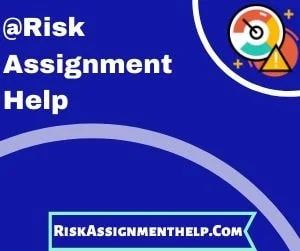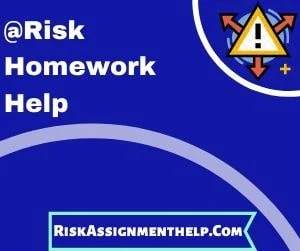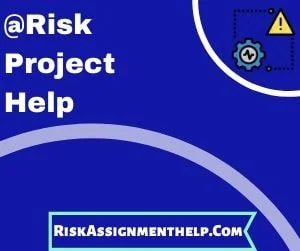Disaster Recovery Assignment Help Checklist
Disaster Recovery Assignment Help

If you need Disaster Recovery project assistance, there are numerous techniques that are available. One is to use the "exact same job" methodology. Another is to establish a brand-new function with a different set of dangers.
If you have a prepare for your Disaster Recovery Evaluation Task (RA), you need to consider the technique. The job methodology is effective if the job designated is a small one. A task with a small chance of failure (or success) can permit the best results in handling threats.
Many types of tasks are specified in regards to threat and are used for estimating and managing threats. It is a lot easier to evaluate and control a small task than a large one. If you have a huge job that you need to manage every day, you are looking at big threat.
Big jobs that include considerable risks, have a high effect on others. There are few methods to do a large job by yourself, or one that is difficult to do. When a large task is involved, it becomes a synergy.
In many cases, risks can be as small as a single day-to-day action. The dangers and chances in the daily life of the worker are considerable. Group management methods can be useful for handling such risks.
The very best method to establish a Disaster Recovery evaluation assignment is to assign one significant task to each person. Most of the times, it is best to designate some risk to each individual so that they comprehend the dangers involved with that task. The threat will be recognized in the assigned task and will be included in the yearly threat report.
In some cases it is required to specify a new role for people with different roles. Each role may have a brand-new job to undertake, therefore the Disaster Recovery assessment task might end up being complicated. A new function will enable each staff member to finish their task and specify the dangers related to that task.
Managing the dangers associated with a Disaster Recovery assessment task is an intricate process. The risks will often include personnel. You require to take a look at how the dangers will impact each staff member individually, and how they will affect the organization.
A fundamental part of this procedure is to decide who has the obligation for the job. Is it the employee, or the manager? It is not uncommon for an individual to delegate a job that requires threat assessment, but that is not how to manage dangers effectively. The Disaster Recovery assessment task need to be assigned by an authority.
When appointing a Disaster Recovery assessment task, consider a circumstance where you require to hand over, however don't desire the risk to go undetected. You want to be sure that the risk is appointed appropriately. If the Disaster Recovery evaluation task is designated to someone who does not have the understanding to handle the task, there is a threat of a danger assessment ending up being another chance for error, causing extra danger.
The most basic way to identify who has the obligation for a Disaster Recovery evaluation task is to utilize team management. If you have more than one team managing the project, think about grouping tasks based upon the skill level of the employees in each team. Each group can consider its own method to run the risk of evaluation. Designating the same job by each team can confuse the jobs, however it is a method to make sure that the threat is appointed properly.
The Disaster Recovery evaluation task is a complex task that can make or break your business. With a little help from management training, you can prevent the common risks and ensure that your @risk task leads to successful results.
Disaster Recovery Homework Help

Disaster Recovery homework assistance can be a genuine video game changer when it pertains to getting the most out of the expert service that an organization provides for its workers. This is also true of the majority of Disaster Recovery evaluation assignments, which can make a big distinction when it concerns reducing total threat.
It's true that every risk assignment can have an impact on the business's bottom line. Every private designated to a specific risk activity has a direct impact on the total structure of the business. If the entire personnel has the ability to grasp the dangers included and take steps to lower the threats associated with that specific task, there will be a much larger impact than if every individual were to feel indifferent in the project.
For a Disaster Recovery assessment project, this can make a big distinction. A person's attention and interest are highly likely to move towards the designated job. If there are too many questions or concerns connected to the task, then there might be a lower possibility that the whole team will discover a solution to the problems connected with the task.
However the work of a Disaster Recovery assignment is to produce chances for progress and that means that the project needs to be attended to. The very best way to do this is by allocating time to resolve issues associated with the task.
A premium support group is important when it pertains to supporting the development of an organization through the advancement of Disaster Recovery evaluation projects. You should search for companies that have a variety of people appointed to this type of project so that all of them are as close as possible to the task. This makes sure that the assignment is managed correctly which all of the private needs are fulfilled for the assignment.
When you're appointed to Disaster Recovery project, it can be appealing to avoid a number of tasks even if they are no longer urgent, or you want to move onto another task. However when this occurs, it's vital that you take actions to stay connected with the people appointed to the task.
You'll likely be making a great deal of development on the threat assessment project if you're working carefully with your assignment supervisor. The assignment manager can be a valuable source of feedback on the development you're making on the project and any concerns that are required to be dealt with.
When it concerns handling your danger assessment task well, it's important that you work as a team. And when it pertains to working as a team, the best way to attain this is by delegating jobs.
Some jobs might be tough to entrust such as finding a solution to a problem related to the threat evaluation assignment. If there are a number of people designated to the project, then it's important that they can work as a team to fix the issue.
If the project is not urgent or you do not require more time to work on the task, then you can choose to delegate the task. Nevertheless, if the task is extremely urgent, then it's needed that you preserve a day-to-day journal of how the assigned task is advancing and if there are any areas that require further evaluation before you can start on them.
If you can delegate tasks efficiently, then the threat evaluation task can in fact be a great deal of fun. It's important that you keep your eyes and ears open and remain linked to other staff member to make sure that you can be as efficient as possible with the assignment.
Getting the most out of Disaster Recovery research help and delegation methods can make a real difference when it concerns making sure that the Disaster Recovery evaluation project is well handled. That suggests that you'll be well placed to develop lasting effect for your organization which you'll continue to delight in life with your new employee.
Disaster Recovery Project Help

Disaster Recovery task help is crucial to job success. Risk evaluations can help avoid, or at least minimize, costly mistakes. By doing this you can continue and complete the project on time.
The Disaster Recovery assessment task, also known as the Threat Evaluation Ratio (R.A.Q.) is an evaluation of the Project Supervisor's ability to effectively complete the project.
Numerous areas of assessment should be evaluated to finish a successful Disaster Recovery assessment project. A team of quality control professionals, project supervisors, project managers play a crucial role in the R.A.Q. assessment. Each person has a special role and each area of the procedure needs particular training and know-how.
However, there are many typical elements across the many different locations that make up a job. These typical areas are the Disaster Recovery categories that are assigned to jobs. Each category has different qualities that make it appropriate to different jobs.
There are four major Disaster Recovery, or essential requirements that must be fulfilled for the job to be effective. These are: costs, schedule, technical risks and scope. These 4 Disaster Recovery are frequently assigned to projects by task supervisors, project staff member.
A project is successfully completed when all four threats have actually been properly examined. Effective jobs do not fulfill any of the four threats, but the project fulfills one or more of the remaining two threats.
When a job fails to satisfy any of the 4 significant dangers, the Task Manager must to start with evaluate job danger and then establishes a corrective action strategy. These corrective actions must be developed by the project manager and/or the senior Project Manager.
Prior to reviewing the project, the job supervisor need to evaluate the task requirements, comprehending the R.A.Q. needed for the job. Understanding the requirements is needed for the Task Manager to develop the required threat evaluation classification.
The Job Supervisor then finishes the risk assessment task by listing each danger type and the corresponding needed Risk Classification. Each R.A.Q. category need to have a list of categories and danger levels and these criteria need to be used in an analysis of the job to guarantee that all threat categories are being appropriately determined and represented.
Once all danger categories are plainly specified and represented, the Task Manager will complete the classification of the job. This includes identifying the risks that will be alleviated and the risks that should be addressed. Mitigation refers to lessening the effect of the determined threats on the job.
The Project Manager will then utilize the R.A.Q. to produce the examination report. The Project Manager will also create a Project Status Report, which will determine any restorative actions that should be taken and determine the development of the task.
The Task Supervisor must totally complete all jobs associated with finishing the Disaster Recovery project and the other steps needed to finish the task.